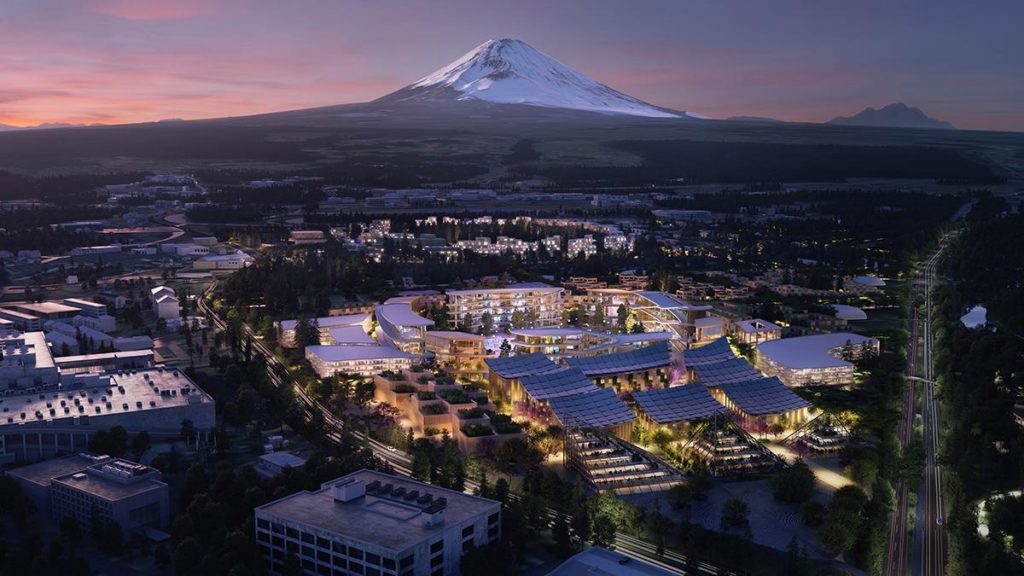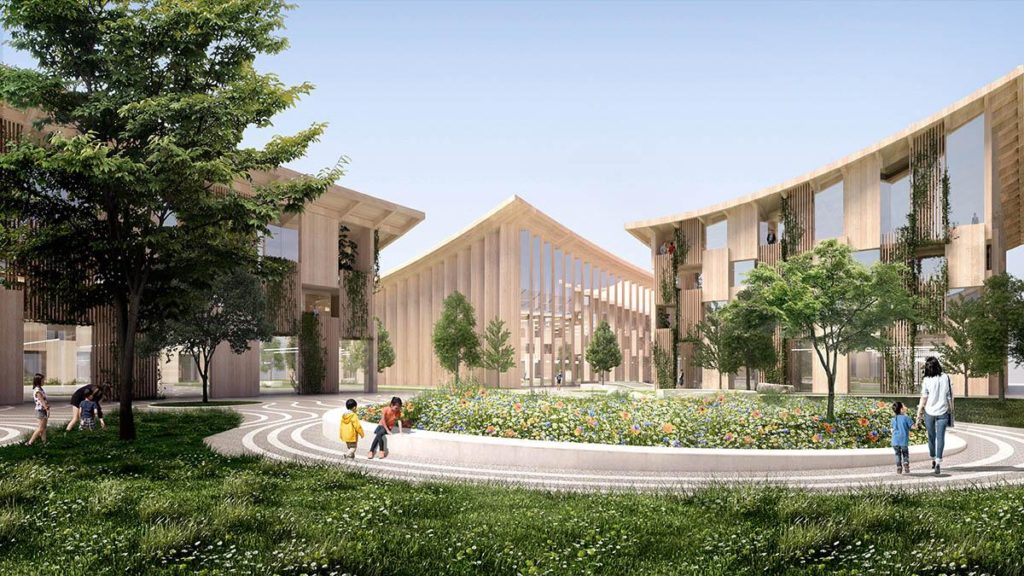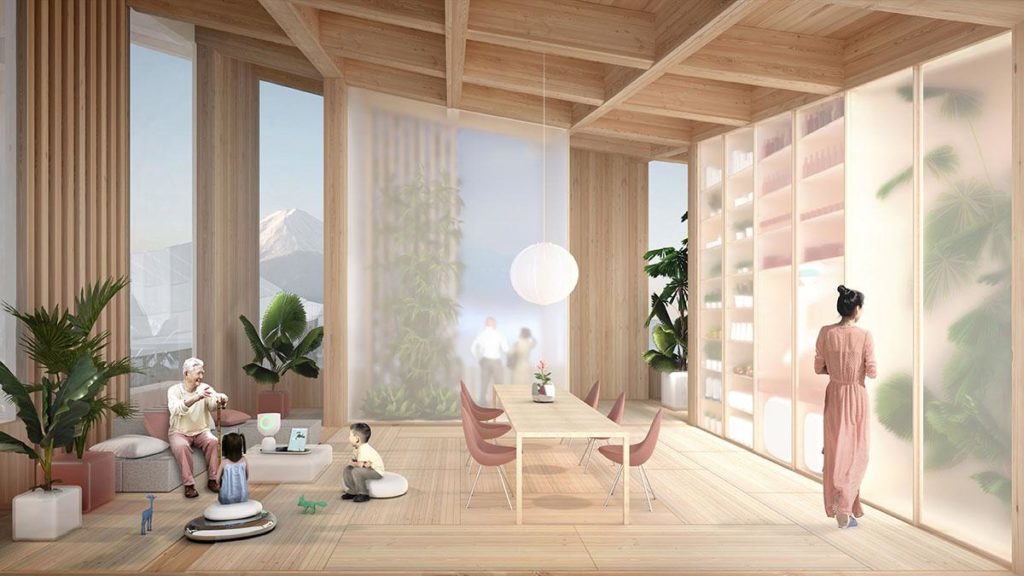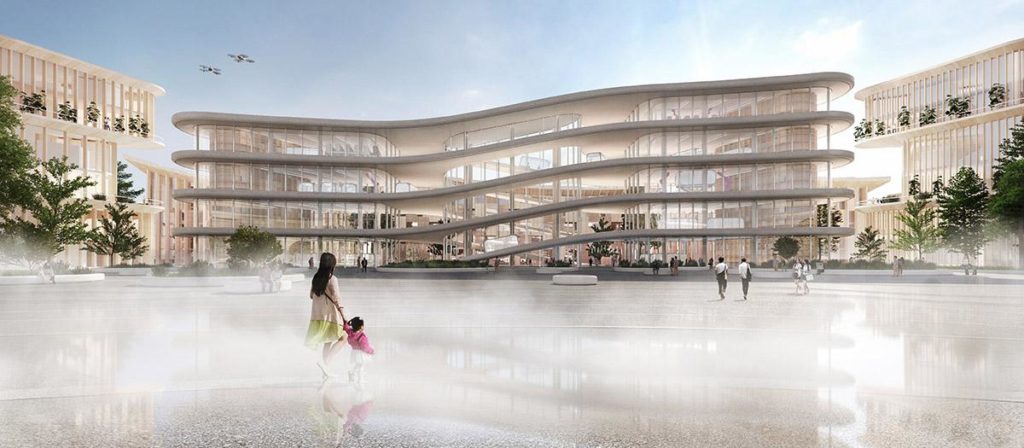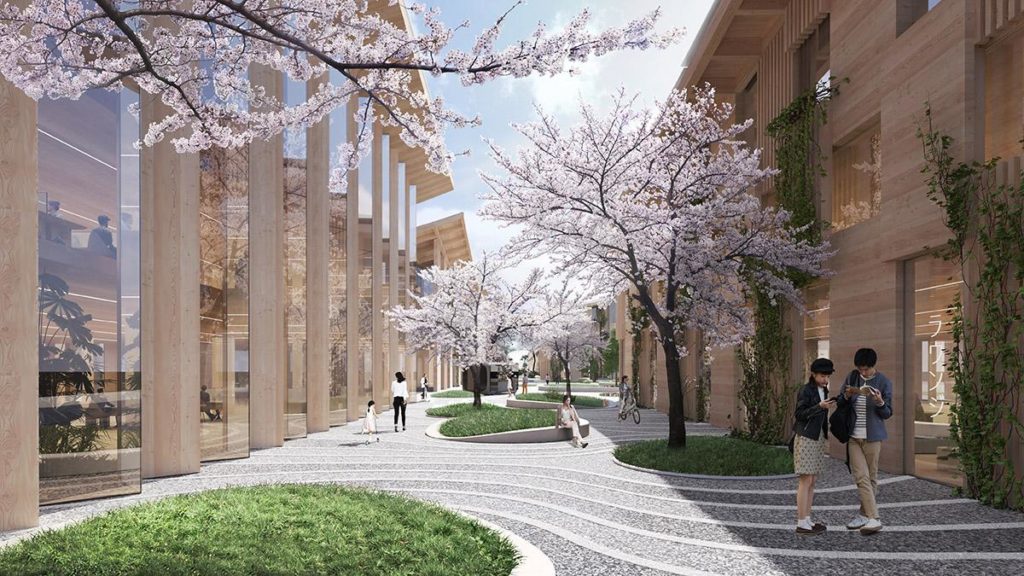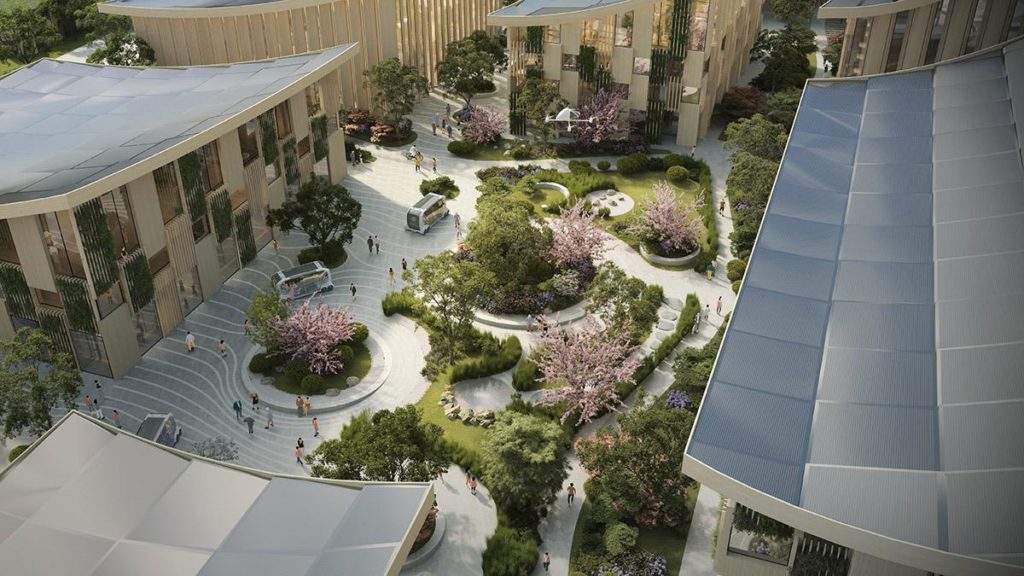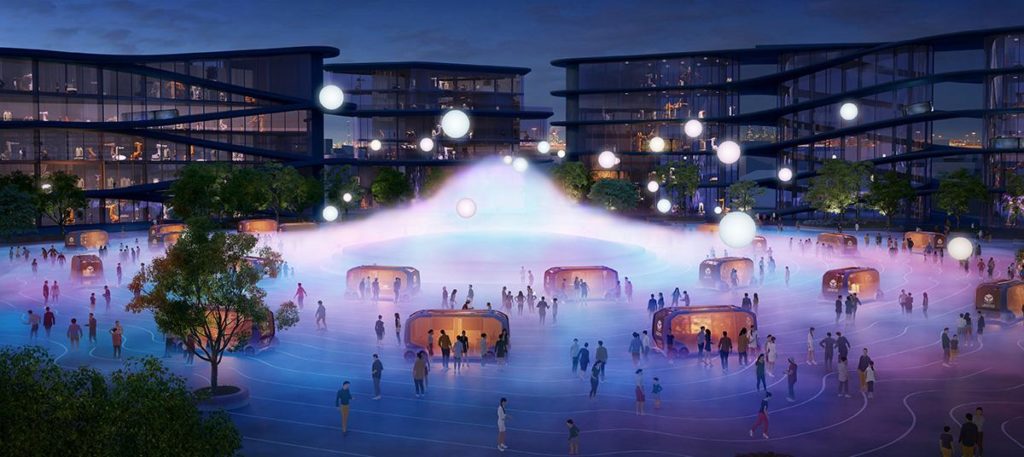BIG in Japan
While the rest of the world is merely talking about its visions of future cities, Toyota is getting serious. It has teamed up with architectural firm BIG to build its city of the future in Japan. Construction is already scheduled to begin in 2021.
When a major carmaker announces that it is going to present something big at the CES (Consumer Electronics Show), people tend to think of hydrogen cars and other innovative automotive drive systems that deliver on the promise of sustainability. Not so with Toyota. Taking to the stage of this hi-tech showcase in Las Vegas, the Japanese multinational attracted everyone’s attention with its concept of a visionary city of the future.
The amazing Woven City
In a 20-minute remarkably low-key presentation, Akio Toyoda, CEO and grandson of company founder Kiichiro Toyoda, presented his Woven City concept. In addition to unveiling astonishingly detailed plans for this prototype city of the future, the Japanese executive gave a humorous wink to the high level of ambition involved.
Candidly addressing his sceptics, Toyoda, 63, admitted that they may be thinking: “Has this guy lost his mind? Does he think he is a Japanese version of Willy Wonka?” The project is in fact quite controversial within the Toyota Corporation, and the comparison with the eccentric figure from “Charlie and the Chocolate Factory” is actually not all that far-fetched.
Toyoda managed to fast-track the project from the drawing board to a highly evolved scheme even before his presentation in Nevada. And so his personal vision of the city of the future is about to become a reality – with construction scheduled to begin in 2021.
City of the future on track for realization
The sad fact of the matter is that of all the grandiose, visionary urban planning concepts riding the current wave of sustainability in the world of architecture, virtually none has come even remotely close to being realized. But Toyota’s plans are astonishingly concrete.
The upcoming construction launch date alone indicates that planning has reached an advanced stage. And this is the work of one of today’s hottest international architectural firms: Bjarke Ingels’ firm BIG (Bjarke Ingels Group) has been commissioned with the project.
The vital statistics of a vision
Toyoda has selected a former company production site as the ideal location for his Woven City. On an area of 71 hectares – roughly equivalent to 100 football pitches – this unique vision will soon provide living space for an initial population of 2,000 people. So, at least in terms of its size, we shouldn’t expect a large metropolis to emerge right at the foot of the Mount Fuji volcano. But when it comes to sustainability, the Toyota city will easily surpass all major cities around the world.
An emission-free city
As their top priority, the developers of this new city have committed themselves to creating a system that is energy self-sufficient and emission free. Indeed, the entire project will have to measure up to these strict environmental parameters. The plan is to rely primarily on hydrogen fuel cells to supply the city with energy. The extensive concrete infrastructure for this city will be placed underground, while the above-ground buildings will be made primarily of wood.
Planners envisage large apartment complexes with curved roofs decked with ultra-efficient photovoltaic cells to generate home energy. This will be reliant upon sunlight and complement the other main source of sustainable energy.
A futuristic mobility concept
Not surprisingly, the Japanese carmaker has developed a comprehensive transport and infrastructure concept for its ideal community. The name “Woven City” refers to the weaving together of three different types of streets or pathways. Ingels and his team have proposed one street reserved for faster vehicles. The second street will be a mix of lower-speed micro-mobility options, like bicycles and e-scooters, but also with pedestrians. The third and final artery will be a park-like pathway for pedestrians only.
Special focus has been placed here on the use of autonomous multi-purpose vehicles, which Toyota has been working on intensively for many years. In addition to transporting local residents, these vehicles will allow shops and offices to go mobile. Toyota introduced this new concept in autonomous and electric vehicles two years ago under the name e-Palette. Now the next generations of this concept will be put to the test here.
The focus is on community
In many ways, Akio Toyoda sees the construction of Woven City as the realization of his own personal lifelong dream. But the moment his city is populated with people, he will also embark on a new experiment. In fact, he envisions the city as a “living laboratory”, as he calls it. In concrete terms, Toyota intends to use the streets of Woven City to test and develop advanced technologies such as autonomous vehicles and artificial intelligence in a real-world environment.
And to ensure that the needs of local residents won’t be ignored, features geared to meeting people’s social needs were built into the concept right from the start. Most notably, the urban landscape will include a central square as a venue for events and activities that are open to the general public. This follows the model of older, well-established cities that invariably have a town centre that is an essential gathering point for the local population. Great importance is also attached to providing comprehensive health care. Likewise, a wide range of activities in residential areas are aimed at fostering and facilitating a multi-generational community.
Working together to forge a new world
But the Toyota CEO also sees the planning and construction phase as a kind of experimental situation. Based on this approach, he has invited partners in academia and the business world to join him in making the city of his dreams a reality. The idea is to create a new world as a collective effort – and not as a solo endeavour.
This broad input from diverse players is perhaps the most unrealistic aspect of Woven City, but we’ll find out soon enough.
Text: Johannes Stühlinger
Translation: Rosemary Bridger-Lippe
Images: BIG
